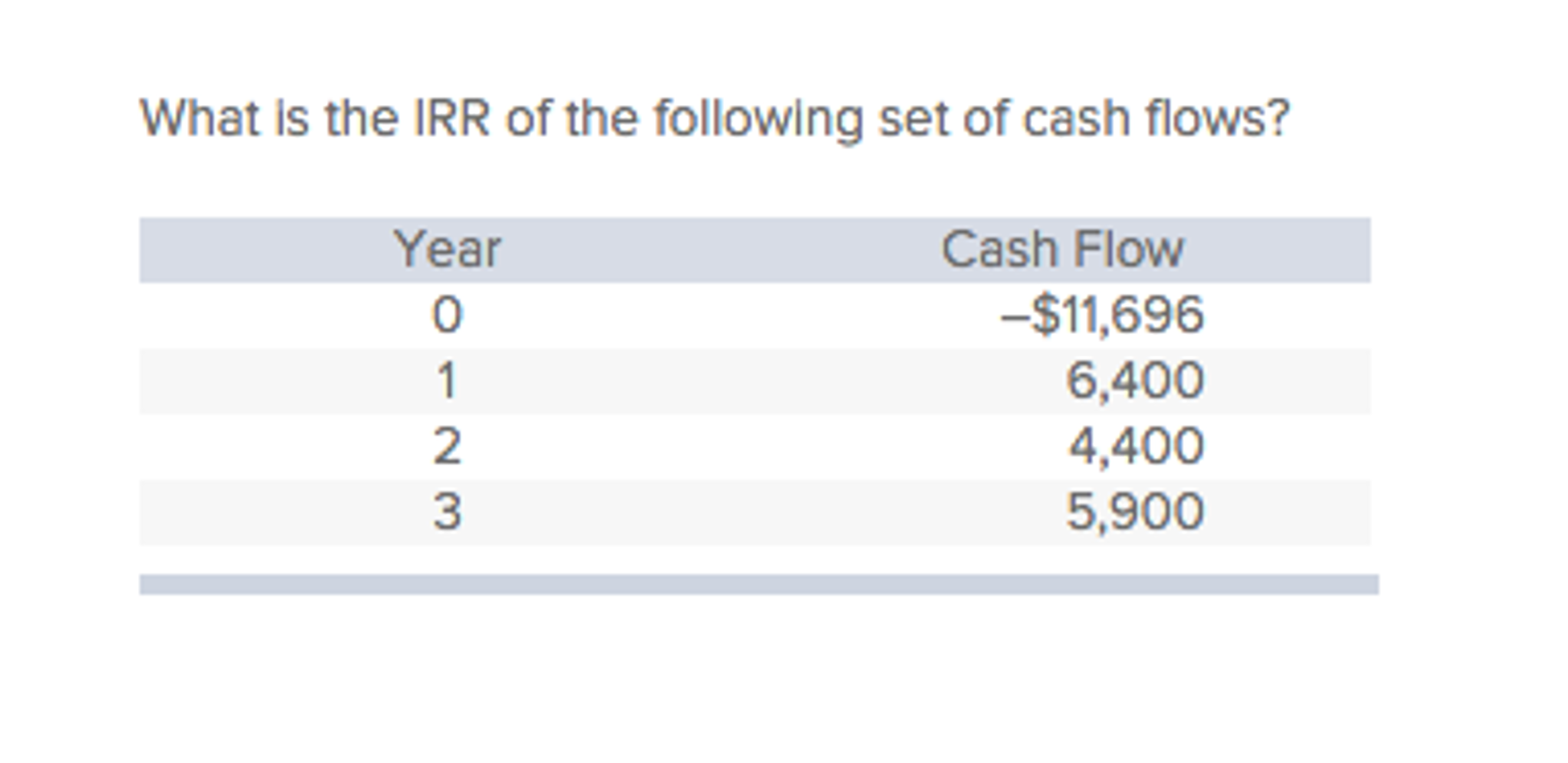

Suppose you have the opportunity to invest in a project that will require a $100 investment today and pay out a single cash flow of $250 in year five.
Irr with cashflows in percentages series#
It's also very practical for measuring the returns on investments in collectibles, commodities, nondividend-paying growth stocks, or even funds, where returns are determined by the price at which an investment is sold rather than a series of cash flows over time. IRR differentiates between money at different points in time, on the basis that receiving money now is more useful than receiving it in the future. For Jacksons Quality Copies, the IRR of approximately 11 percent is greater than the companys required rate of return of 10 percent. If the loan costs 10 and the IRR is 9, it’s an unwise investment. This means that in a sales environment all you need to worry about is whether the size and timing of the costs and the benefits have been described correctly.Calculating the IRR for a project with an initial outlay and single cash flow is very easy to do. If the loan costs 10 and the IRR is 20, it is a worthwhile investment. With an internationally recognised method of calculation defined by the finance community you can rely on IRR to be solution independent.

A firm wishes to bid on a contract that is expected to yield the.

NPV of project is negative and Profitability index is less than 1, project is not acceptable. Profitability index PV of future cash inflows/ initial outlay. It is defined as the discount rate that makes the NPV of all cash flows from an. Present value of cash flows 30005.650216950.6. You simply divide the gain of 42 into your original investment of 1,000. Now in year 2 this 110,000 earns 10, which equals 11,000. That means in year 2 we no longer have 100,000 invested, but rather we have 100,000 + 10,000, or 110,000 invested. In this case, it is easy to calculate the rate of return at 4.2 percent. Since the 10 IRR in year 1 we receive is not paid out to us as an interim cash flow, it is instead added to our outstanding investment amount for year 2. More formally IRR is defined as the return rate per annum taking into account the initial and recurring costs of the solution and comparing these to the timing of benefits identified as a result of implementing the project. The IRR is a measure of the annualized rate of return for an investment. Internal rate of return (IRR) is the percentage of returns that a project will generate within a period to cover its initial investment. If you put 1,000 in the bank, the bank pays you interest, and one year later you have 1,042. On the other hand, if the second parameter is used (i.e., IRR ( C 6: F 6, C12)), there are two IRRs. In addition, an investor or business owner can compare the project IRR generated against their own internally required minimum return rate (sometimes known as the hurdle rate) to check whether a project should be approved. If the second parameter is not used in the function, Excel will find an IRR of -10. As a rule, the higher the IRR % the greater return a project delivers to the investor or business owner. They have essentially equivalent utility. It is particularly useful in comparing the relative merits of different projects which all have different IRR values. Internal Rate of Return (IRR) and Net Present Value (NPV) are complementary measures of Discounted Cash Flow (DCF). Internal Rate of Return when used for business case decisions is a measure of the annual % rate of profitability on a project or solution when compared to the original amount spent or invested.


 0 kommentar(er)
0 kommentar(er)
